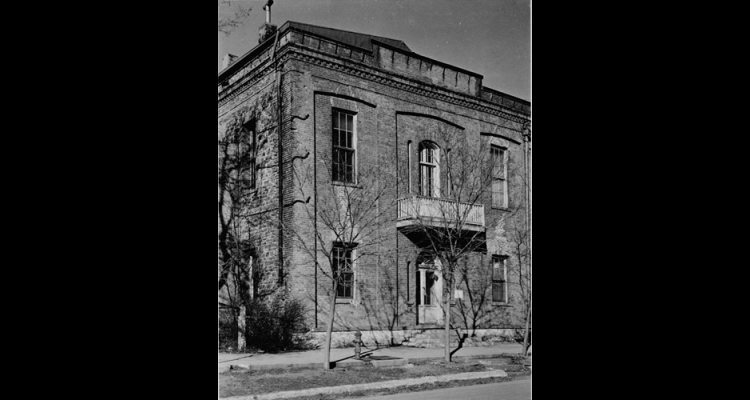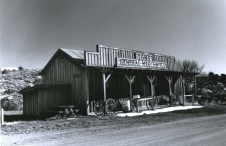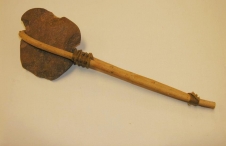Pioche
Pioche, the county seat of Lincoln County, is a twice-active, now-dormant mining camp near the Highland Range of eastern Nevada. Located about one hundred and seventy-five miles north of Las Vegas near the Utah border, it is one of the Silver State's more remote communities.
The discovery of silver ore in the vicinity in 1869 attracted the usual mining camp rush for the next three years. The regional press called it one of the richest, wildest, and most promising camps in the West. Pioche became the county seat in 1871 when the mining bonanza was approaching its apex. In the extravagance of the period, it built a courthouse, paid its contractors and county officers lavishly, and found itself deeply in debt when the boom ended. The financial obligation for its famed "Million-Dollar Courthouse" was finally liquidated in 1938.
By 1876, as the boom ended, most investors and prospectors found other fields for their adventure. Pioche survived for the next half-century because mineral processors reworked tailings from its mills and mines. It also remained the county seat of one of the nation's largest counties. Lincoln County embraced more than eighteen thousand square miles until 1909.
In that year, the new town of Las Vegas, founded in 1905 by the building of the San Pedro, Los Angeles & Salt Lake Railroad, led to "county division" with Clark County being carved out of Lincoln and taking much of its territory. After that, Pioche continued to rely upon occasional mining and ranching enterprises.
In the 1920s, the Combined Metals Reduction Co. identified large amounts of lead-zinc ore in the lower levels of the Pioche mines and initiated new explorations and development. With the arrival of inexpensive electrical energy from Boulder (Hoover) Dam in the 1930s, the Pioche mines revived. The "second boom period" (1937-57) enabled the town to regain its place among the West's major mining camps.
After the mines and mills closed in the late 1950s, Pioche receded again into semi-dormancy. Small mining ventures were undertaken from time to time, but no major new metal deposits were discovered in the last half of the twentieth century. However, developers enjoyed some success in processing perlite and diatomaceous earth. Although some prospecting for gold has occurred in recent decades, the Pioche area did not share the benefits of the modern gold rush of the late twentieth century.
Located at an elevation of 6,100 feet, the town has a remarkable vista of the valleys and ranges of northern Lincoln County, where the grazing of livestock is an important sustaining industry. It remains the commercial and governmental center for the county of more than 10,000 square miles.





